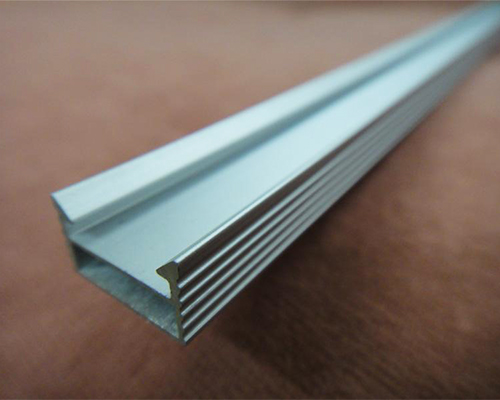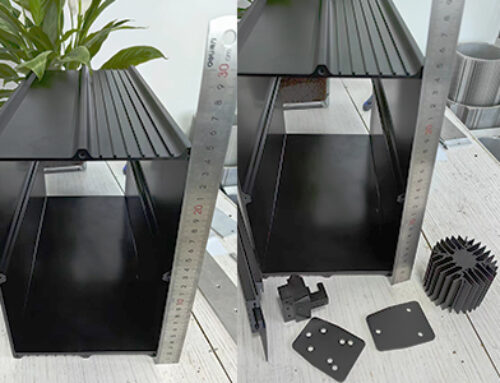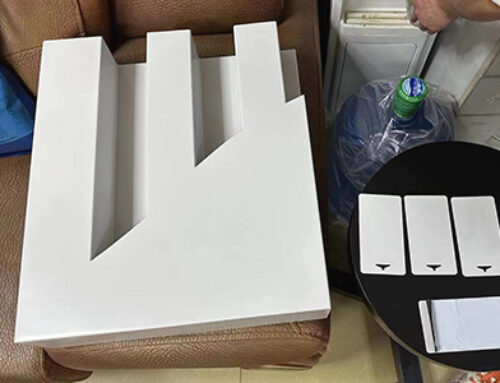Project Description
The defects and corrective measures in aluminium profile chemical polishing are summarized and perfected in the process of production. The common defects and corrective measures in the chemical polishing process of phosphoric acid nitric acid are summarized as follows:
Insufficient Brightness
- Brightness is the most important thing in chemical polishing. The reasons can be analyzed from the production process and chemical polishing process of special aluminum materials. The production process of special aluminum material has been discussed in detail. It is recommended that aluminum ingot of aluminum purity of 99.70% and above are used to produce special aluminum. Aluminum-magnesium alloy 5056(Al 99.98 Mg 1) is produced with a purity of 99.99% pure aluminum ingots. After chemical polishing, it has a high brightness. The lack of nitric acid in the tank control can make the surface gloss deficient, and the surface may attach too much copper. The content of nitric acid is too high, and the surface of aluminum can form the iridescent film, which can make the surface blurred or opaque, and cause the lack of brightness. The chemical polishing time is not enough, the temperature is not enough, the mixing is not sufficient, the bath water age also can make chemical polishing surface brightness is insufficient. The relative density of the tank is relatively high so that the liquid surface of the aluminum can be prevented from being surfaced and the upper aluminum is not bright enough. The influence of water causes the lack of brightness and is often overlooked. It is best to use dry aluminum to enter chemical polishing bath to eliminate water.
White Fixtures
- The defect has a layer of white sediment on the surface of the aluminum after the chemical polishing. The surface of the aluminum material at the bottom of the attachment can be corroded. Usually, the defect is due to the high amount of dissolved aluminum in the chemical polishing tank. If the relative density of the chemical polishing tank is above, the further confirmation can be obtained. It is necessary to take measures to adjust the amount of dissolved aluminum in the tank to the normal range.
Surface Roughness
- The surface of aluminum after chemical polishing is rough. The defect may be caused by high nitrate content and acid etching in the tank. If the copper content in the tank is high, the surface roughness will be more serious. Usually, if the nitric acid content in the tank is too high, the chemical polishing reaction is intense, and there is “boiling” phenomenon. If the nitric acid content is normal and the copper content is high, then the aluminum surface of the water after washing has a very obvious characteristic color of metallic copper. If the characteristic color of copper is very deep, it indicates that the copper content in the tank is high and the content of nitric acid and copper should be adjusted to reach the normal range. If the amount of copper in the additive is high, it should be less; If the copper in the tank comes from the chemical polishing of copper and aluminum, then take measures to add the additive that does not contain copper or adjust the bath fluid. If the internal organizational defects of aluminum are caused by the surface roughness: casting state organization, such as casting or die-casting aluminum workpiece; The grain refinement of aluminum is not sufficient and loose, slag and other defects; The surface roughness caused by insufficiency of variable shape and loose pattern in the process of processing is made by improving the internal quality of aluminum. Therefore, the production process of aluminum is particularly important for improving the surface quality of chemical polishing.
Transferred Etching
- The defect occurred after the chemical polishing of aluminum material was transferred to the washing process, mainly caused by the delay of aluminum transfer. Further confirmation of the defect, the surface of the aluminum after chemical polishing appears bright and light, with some light blue. It is also possible that the sulfuric acid content in the tank is high. The aluminum is raised from the chemical polishing bath, and the liquid of the hot polished tank still reacts violently. The nitric acid is the fastest. If the transfer is slow, the defect can be found during the process of washing. Therefore, when the chemical polishing of aluminum is finished, it should be quickly transferred to the water in the water wash tank, and fully stirred and washed.
Corrosion
- Such defects are usually accumulated by gas on the surface of aluminum, forming cavitation holes and producing point corrosion; or caused by low nitric acid or low copper content. According to the specific situation, due to the accumulation of the gas, it should be reasonable to charge, increase the pitch of the workpiece, and intensify the stirring to make the gas escape as soon as possible. The fixture should be clamped in the correct position, cannot be clamped on the decorative surface, and should not obstruct gas escape. If the surface chemical cleaning of aluminum surface is not sufficient, it can also cause a point corrosion. If the surface of aluminum has a superficial corrosion defect or dry lotion stain, it will aggravate the generation of such defects. Measures should be taken to eliminate such defects and strengthen the quality control of the surface of the aluminum. If the content of nitric acid is confirmed to be low, it should be added to the specified range in time.





